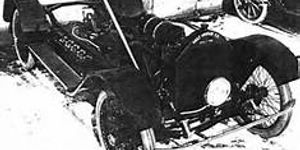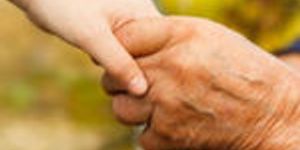Technology
Galt
DEC 08, 2013 12:00 AM PST
Share
Researchers Trigger Transformation of Human Stem Cells into Working Lung Cells
 In a historic first, human stem cells have been coaxed to transforming into living, functioning lung and airway cells. And already the researchers responsible are looking forward to a bright future involving the technique, including a real possibility of "growing" lungs for transplant using the patient's own cellular material.
In a historic first, human stem cells have been coaxed to transforming into living, functioning lung and airway cells. And already the researchers responsible are looking forward to a bright future involving the technique, including a real possibility of "growing" lungs for transplant using the patient's own cellular material."In the longer term, we hope to use this technology to make an autologous lung graft," said Hans-Willem Snoeck, MD, PhD, professor of medicine (microbiology & immunology) at the Columbia Center for Translational Immunology and the Columbia Stem Cell Initiative. "This would entail taking a lung from a donor; removing all the lung cells, leaving only the lung scaffold; and seeding the scaffold with new lung cells derived from the patient. In this way, rejection problems could be avoided."
The research, conducted at Columbia University Medical Center, is being published this week in the journal Nature Biotechnology. Prior to the announcement, human stem cells had been triggered to transform into heart cells, pancreatic beta cells, intestinal cells, liver cells, and nerve cells. However until now viable lung cells have proven elusive to generate.
The new research is an impressive refinement of Dr. Snoeck's findings, published in 2011, showing that anterior foregut endoderm - which differentiate into lung and airway cells - can be created from human embryonic stem (ES) cells or human induced pluripotent stem (iPS) cells. ES cells have a long history of laboratory use accompanied by ethical issues in regard to the source material. However iPS cells - readily located on fully-mature skin cells - can be "persuaded" to revert into basic epithelial cells. It is these cells which are then capable of differentiating into the specialized tissue that compose the heart, bones, liver... and now lungs.
But now, the researchers have made ES and iPS cells transform into full-fledged lung and airway epithelial cells: those found covering the surface of lung tissue. These cells demonstrated at least six characteristic markers of various lung and airway cells, including type 2 alveolar epithelial cells. It is type 2 that has scientists particularly excited: producing the surfactant critical for maintenance of alveoli as well as aiding in repair of the lungs after damage and industry. The possibility exists that in the future sufferers of emphysema and similar conditions could receive regenerative treatment currently beyond that of existing medicine.
Until then, the research is set to be applied toward idiopathic pulmonary fibrosis (IPF): a disease which especially affects type 2 cells and has proven remarkably difficult to study. "No one knows what causes the disease, and there's no way to treat it," said Dr. Snoeck. "Using this technology, researchers will finally be able to create laboratory models of IPF, study the disease at the molecular level, and screen drugs for possible treatments or cures."
And with even further refinement? Dr. Snoeck and his colleagues are already highly optimistic. "Now, we are finally able to make lung and airway cells. This is important because lung transplants have a particularly poor prognosis. Although any clinical application is still many years away, we can begin thinking about making autologous lung transplants-that is, transplants that use a patient's own skin cells to generate functional lung tissue."
You May Also Like
Loading Comments...








